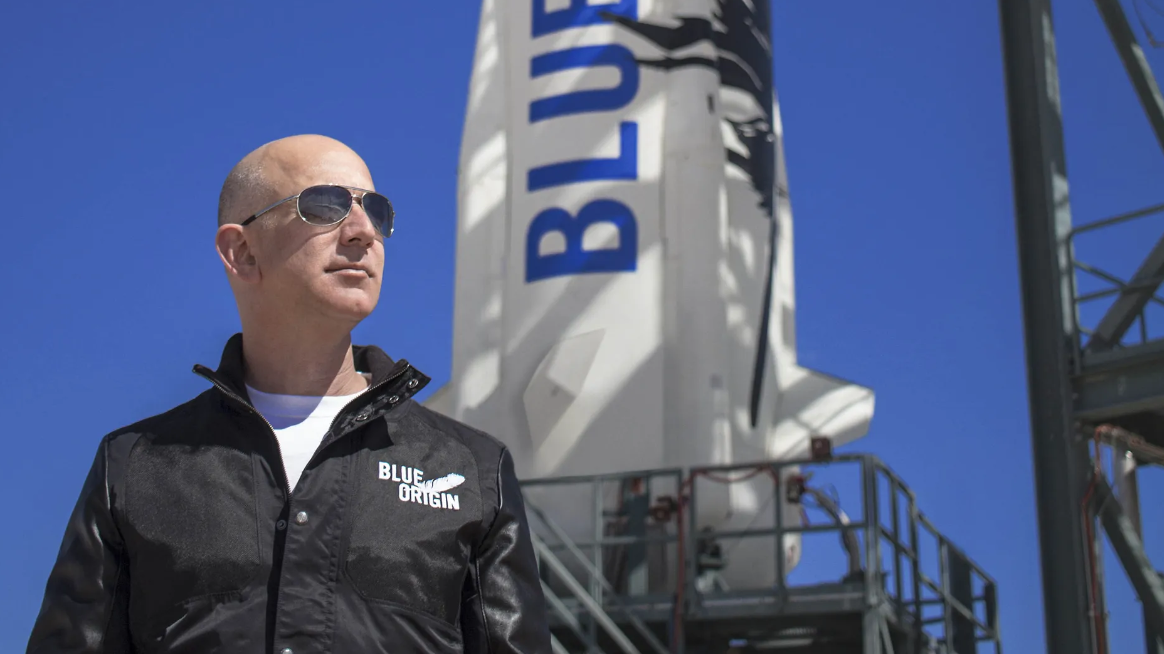by Christophe Bosquillon

Bob Smith, the now retiring former CEO of Blue Origin, was invited at the Financial Times Investing in Space Summit in June 2023 to provide an overview of the future of Orbital Reef, the commercial space station being developed jointly by Blue Origin and Sierra Space. His statements about Orbital Reef were considered a bit disappointing by the inner circle of Space analysts, but nothing in Smith’s tone hinted at the shocking developments that just unfolded.
When rumours of a split between Blue Origin and Sierra Space on the NASA contract related to Orbital Reef started circulating in the last days of September 2023, it became apparent that between summer and fall Blue Origin had reallocated internal resources to more pressing priorities, including and not limited to the Blue Moon lander (plans for a Blue Origin own commercial station remain unclear). Bob Smith is being succeeded by Dave Limp, a senior executive at Amazon. As for Sierra Space, it looks like they will be working on their Dream Chaser space plane. So where does that leave us with commercial space stations supposed to come onstream no later than 2028 to replace the ISS as it is being decommissioned no later than 2030?
NASA and the commercial space stations
NASA had originally allocated $550mn for initial contracts split among these four platforms for business proposals to be submitted: Axiom Space (potentially a favourite), Nanoracks (that uses a Lockheed Martin design), Northrop Grumman (but mostly as a designer looking for an owner operator), and the now mothballed Blue Origin-led “Orbital Reef” with Sierra Space and others. One or more winner(s) among the 3 remaining competitors should be selected around 2025. Whoever wins, to take over from the ISS, should be fully operational by 2028. That sounds a bit tight.
The only space station guaranteed to be operational in orbit in the early 2030s so far is the Chinese one
The first contract was awarded to Axiom Space, whose module attached to the ISS will be gradually expanded into a polyvalent platform until it detaches into an independent orbit. Polyvalent means that the platform will provide to a set of government and private sector customers a variety of services of scientific, technical, logistical, and industrial nature, with a significant share of revenues being further derived from the space tourism market (provided tourism materializes).
In late 2021, NASA awarded three more design contracts for independent space stations, including the now defunct Orbital Reef project not anymore led by Blue Origin and Sierra Space. Therefore currently, other than Axiom Space, there remain only two competitors. One is a consortium led by Nanoracks, owned by Voyager Space, which promotes Starlab, a Lockheed Martin design. The other one is Northrop Grumman, but only in the role of designer and manufacturer of a training and science projects platform. Which entity would own and operate this platform remains to be determined, as Northrop Grumman has always clearly stated that while they design and manufacture, as a corporation, they aren’t meant to own nor operate such infrastructures in orbit. Therefore, this is all very much up in (above) the air.
Clearly, the challenge for each of these remaining three projects is to come up with a business plan where they could line up, on top of a NASA service contract, several foreign government space agencies as additional anchor customers, and an even larger number of private sector customers, that should constitute the foundation of a commercially sustainable activity.
Easier said than done, since nobody knows to which extent market demand expectations in life science, space logistics, material mining, and processing into industrial components manufacturing might materialise.
Currently, other than Axiom Space, there remain only two competitors. One is a consortium led by Nanoracks, the and other one is Northrop Grumman.
Conservative market estimates point, at best, at a $1 billion potential by 2025, and even more voluntary projections fall short of $8 billion, according to a Fall 2022 Financial Times review. So we are probably talking, at best, about a handful of billion dollar of revenues for the market in the foreseeable future. And that doesn’t even factor in the fact that a number of e.g. scientific missions were used to get a free ride from NASA by hopping on and off the ISS without being charged. Furthermore, while new private commercial space stations are expected to operate at a fifth of what it costs to run the ISS, their construction itself will still cost $2 to 3 billion. A significant amount of initial capital expenditures as well as cash flow requirements to keep running stations until they become fully self-sustaining.
As already mentioned here “It doesn’t sound entirely insane though to expect commercial platforms to start with polyvalent business models and be able to thrive to gather incomes from different types of sources. Clearly, one of these activities will be scientific research, testing, and proto-manufacturing that leverages microgravity. These activities, on a small weight and volume scale for starters, will likely go on for several decades.” But that’s not all, since the key is space transportation to orbit and back.
An economic sanity-check
Transportation to orbit, even low, is costly. If you are from an industry familiar with the logistics of either bulk or container shipments, and understand the cost differentials between land, maritime, and air freight, this would be obvious to you. Let’s put it this way: millions of tons of commodities carried by sea-faring ships are charged roughly 40 to 70 dollars a ton. Non-Starship space transportation tickets are now between 4,000 and 7,000 dollars a kilogram. That is one hundred thousand times more expensive. Even if we want to be unreasonably optimistic and wager that Starship transportation market prices will fall to between 100 and 300 dollars a kilogram, this still doesn’t compare to container freight rates, which fluctuate between 100 and 300 dollars a ton. We still have a one thousand times order of magnitude gap. This price gap is the reason why, despite high expectations for Starship’s low prices, we cannot yet fathom Earth-like massive industrial-scale production in orbit, unless we find some super-cheap way of both getting raw materials to the orbital factory, and then shipping the output down to Earth. Perhaps the future will see an integrated industry and market between orbit and e. g. the Moon, pending the even more far-fetched asteroid extraction economy. But today the math just won’t add up for large-scale commoditized industrial production. However, the math does add up if you focus on small, light, and high-value molecules, alloys, or any kind of material or bio-component. That is the only deal, for now.
The future of space-based factories
Lights-out factory, also called a « dark factory » by Siemens, are “one where requirements for human activity are so minimal that the facility can operate in the dark with zero human intervention onsite”. Such orbital facilities would be autonomous, secure from external interference, and use commercial stations for resupply. That includes the model proposed by Space Forge to be considered for an appropriate space-based industrial transition in the next couple of decades.
The half-full glass version of the story is that we may anticipate, with some progress in automation and autonomy, to probably see such « dark factories » expand in orbit, covering pharmaceuticals, biomaterials, and materials such as electronic components and special alloys, plus potentially agri-food inputs (on this topic, please refer to Space Economy Insights with Prof. Matt Gillihall). And they would contribute to bringing in logistics services revenues to companies running commercial stations.
This price gap is the reason why we cannot yet fathom Earth-like massive industrial-scale production in orbit.
The half-empty glass version of the story though, is that the above optimistic scenario of a commercial activity on a scale isn’t happening any time “soon” which in emerging space markets language means by the early 2030s. In other words, “you’ve got to line up your ducks before you sit down and talk turkey”, which means that you need to align all value propositions first to make sure the paying customer’s math does add up. History shows that many a prediction has proven ridiculous in either overestimating or underestimating a market (e.g. computers). Yet, what to do with orbital white elephants if paying customers cash flow materializes only too late and too slowly? And we’re not even talking about the insurance model.
Therefore, we’re not shedding tears on the Bezos split. This is probably good news for Axiom Space. The bottom line for now is that the only space station guaranteed to be operational in orbit in the early 2030s so far is the Chinese one, Tiangong. And the alternatives, albeit potentially only one, or two, are so far at best American. We need to see what that means for emerging space countries looking forward to renting some orbital real estate for their own experiments and potential space trade and manufacturing. Again, we have to ask what place and role may Europe eventually hold in commercial space station value chains, knowing that it is up to a great start with The Exploration Company.

Christophe Bosquillon has a diverse professional background, having operated globally with a focus on the Indo-Pacific region. His experiences in Japan, the Koreas, Taiwan, China, ASEAN, India, Russia, and Australia have given him a deep understanding of the multipolar realpolitik of our world under the Pax Americana. With a background in engineering, trade, and foreign direct investment in industries relevant to Space Resource Utilization (SRU), such as mining, transportation, energy, manufacturing, agrifood, environment, and digitalization, Chris is committed to developing SRU value chains that benefit the Earth. As an executive, owner, writer, and founder of Autonomous Space Futures Ltd, Chris has extensive experience in collaborative policy crafting and works to develop space business and governance models relevant to society. He is a member of NGOs that provide input to the United Nations Committee on the Peaceful Uses of Outer Space (UNCOPUOS) legal subcommittee Working Group on Space Resources. Chris contributes to regulatory clarity on appropriation, priority, sustainability, and sharing in a way that balances national interests with civil society inclusion, provided a transparent due process is followed. When advocating for access to technology and space for the Global South, Chris believes that emerging space powers’ participation in space markets must be commensurate with their interest and involvement in international space politics. He believes that their ability to develop sovereign domestic capabilities with spillover potential is also essential. Chris is keen on ‘Peace Through Strength’ diplomacy and deterrence-based security as enablers of secure space access. He supports sovereign cislunar space situational awareness as mandatory for freedom of circulation in the space domain and deconflicted cooperation on the Moon.
 SpaceWatch.Global An independent perspective on space
SpaceWatch.Global An independent perspective on space




